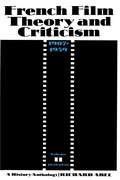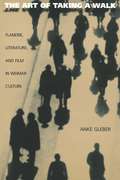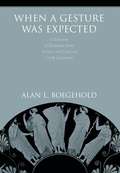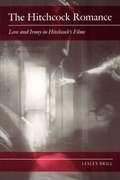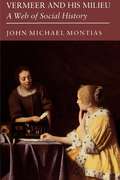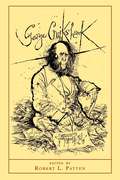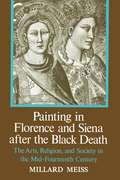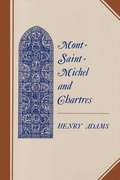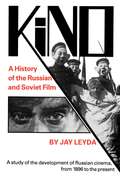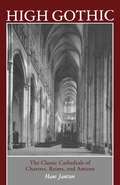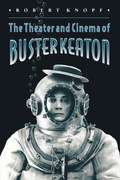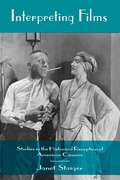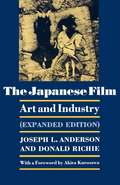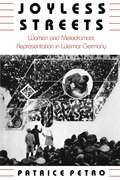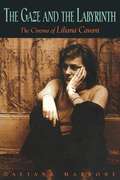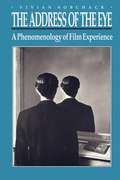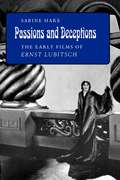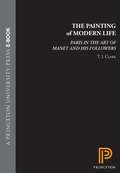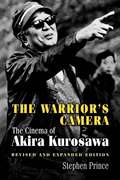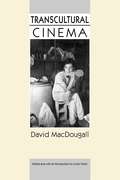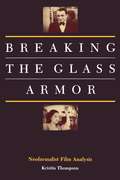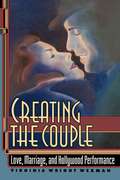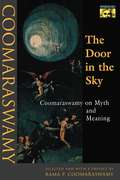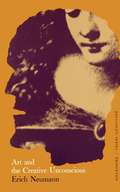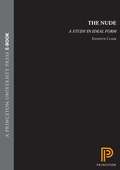- Table View
- List View
French Film Theory and Criticism, Volume 2: 1929-1939
by Richard AbelThese two volumes examine a significant but previously neglected moment in French cultural history: the emergence of French film theory and criticism before the essays of Andr Bazin. Richard Abel has devised an organizational scheme of six nearly symmetrical periods that serve to "bite into" the discursive flow of early French writing on the cinema. Each of the periods is discussed in a separate and extensive historical introduction, with convincing explications of the various concepts current at the time. In each instance, Abel goes on to provide a complementary anthology of selected texts in translation. Amounting to a portable archive, these anthologies make available a rich selection of nearly one hundred and fifty important texts, most of them never before published in English.
The Art of Taking a Walk: Flanerie, Literature, and Film in Weimar Culture
by Anke GleberAnke Gleber examines one of the most intriguing and characteristic figures of European urban modernity: the observing city stroller, or flaneur. In an age transformed by industrialism, the flaneur drifted through city streets, inspired and repelled by the surrounding scenes of splendor and squalor. Gleber examines this often elusive figure in the particular contexts of Weimar Germany and the intellectual sphere of Walter Benjamin, with whom the concept of flanerie is often associated. She sketches the European influences that produced the German flaneur and establishes the figure as a pervasive presence in Weimar culture, as well as a profound influence on modern perceptions of public space. The book begins by exploring the theory of literary flanerie and the technological changes--street lighting, public transportation, and the emergence of film--that gave a new status to the activities of seeing and walking in the modern city. Gleber then assesses the place of flanerie in works by Benjamin, Siegfried Kracauer, and other representatives of Weimar literature, arts, and theory. She draws particular attention to the works of Franz Hessel, a Berlin flaneur who argued that flanerie is a "reading" of the city that perceives passersby, streets, and fleeting impressions as the transitory signs of modernity. Gleber also examines connections between flanerie and Weimar film, and discusses female flanerie as a means of asserting female subjectivity in the public realm. The book is a deeply original and searching reassessment of the complex intersections among modernity, vision, and public space.
When a Gesture Was Expected: A Selection of Examples from Archaic and Classical Greek Literature
by Alan L. BoegeholdWhen a Gesture Was Expected encourages a deeper appreciation of ancient Greek poetry and prose by showing where a nod of the head or a wave of the hand can complete meaning in epic poetry and in tragedy, comedy, oratory, and in works of history and philosophy. All these works anticipated performing readers, and, as a result, they included prompts, places where a gesture could complete a sentence or amplify or comment on the written words. In this radical and highly accessible book, Alan Boegehold urges all readers to supplement the traditional avenues of classical philology with an awareness of the uses of nonverbal communication in Hellenic antiquity. This additional resource helps to explain some persistently confusing syntaxes and to make translations more accurate. It also imparts a living breath to these immortal texts. Where part of a work appears to be missing, or the syntax is irregular, or the words seem contradictory or perverse--without evidence of copyists' errors or physical damage--an ancient author may have been assuming that a performing reader would make the necessary clarifying gesture. Boegehold offers analyses of many such instances in selected passages ranging from Homer to Aeschylus to Plato. He also presents a review of sources of information about such gestures in antiquity as well as thirty illustrations, some documenting millennia-long continuities in nonverbal communication.
The Hitchcock Romance: Love and Irony in Hitchcock's Films
by Lesley BrillWas Alfred Hitchcock a cynical trifler with his audience's emotions, as he liked to pretend? Or was he a profoundly humane artist? Most commentators leave Hitchcock's self-assessment unquestioned, but this book shows that his movies convey an affectionate, hopeful understanding of human nature and the redemptive possibilities of love. Lesley Brill discusses Hitchcock's work as a whole and examines in detail twenty-two films, from perennial favorites like North by Northwest to neglected masterpieces like Rich and Strange.
Vermeer and His Milieu: A Web of Social History
by John Michael MontiasThis book is not only a fascinating biography of one of the greatest painters of the seventeenth century but also a social history of the colorful extended family to which he belonged and of the town life of the period. It explores a series of distinct worlds: Delft's Small-Cattle Market, where Vermeer's paternal family settled early in the century; the milieu of shady businessmen in Amsterdam that recruited Vermeer's grandfather to counterfeit coins; the artists, military contractors, and Protestant burghers who frequented the inn of Vermeer's father in Delft's Great Market Square; and the quiet, distinguished "Papists Corner" in which Vermeer, after marrying into a high-born Catholic family, retired to practice his art, while retaining ties with wealthy Protestant patrons. The relationship of Vermeer to his principal patron is one of many original discoveries in the book.
George Cruikshank: A Revaluation
by Robert L. Patten John FowlesOne of the most important British graphic artists of the nineteenth century, George Cruikshank (1792-1878) illustrated over 860 books, including several by Charles Dickens, and produced a vast number of etchings, paintings, and caricatures. The ten essays collected here first appeared in a special limited edition. In a new preface written for this paperback edition, Robert Patten shows how the insights of these seminal essays have been amplified by recent exhibitions and scholarship. The introduction by John Fowles has been retained and an index has been added. In addition to the many Cruikshank illustrations reproduced in the volume, there are original drawings by contemporary artists David Levine and Ronald Searle.
Painting in Florence and Siena after the Black Death
by Millard MeissThe first extended study of the painting of Florence and Siena in the later 14th century, this book presents a rich interweaving of considerations of connoisseurship, style, iconography, cultural and social background, and historical events.
Mont-Saint-Michel and Chartres: A Study of Thirteenth-Century Unity
by Henry AdamsThis first paperback facsimile of the classic 1913 edition includes thirteen photographs and numerous illustrations of the great cathedrals of Northern France. Henry Adams referred to this book as "A Study of Thirteenth-Century Unity," and its expansive scope, together with the author's deep understanding of the period, makes it a classic in art history as well as in American literature. He wrote, "I wanted to show the intensity of the vital energy of a given time, and of course that intensity had to be stated in its two highest terms-religion and art." Henry Adams' record of his journeys through France, searching for images of unity in an age of conflict, is accompanied by observations on literature, politics, religion, and maior church leaders such as Abelard, St. Francis of Assisi, and St. Thomas Aquinas.
Kino: A History of the Russian and Soviet Film, With a New Postscript and a Filmography Brought up to the Present
by Jay LeydaThis history of the turbulent destiny of Kino ("film" in Russian) documents the artistic development of the Russian and Soviet cinema and traces its growth from 1896 to the death of Sergei Eisenstein in 1948. The new Postscript surveys the directions taken by Soviet cinema since the end of World War II. Beginning with the Lumiere filming of the coronation of Tsar Nicholas II, Jay Leyda links Russia's pre-Revolutionary past with its Communist present through the observation of a major cultural phenomenon: the evolution of the Soviet film as an artistic and political instrument. The book contains 150 drawings and photographs and five appendices, including a list of selected Russian and Soviet films from 1907 to the present.
High Gothic: The Classic Cathedrals of Chartres, Reims, Amiens
by Hans Jantzen James PalmesThis engaging study introduces the reader to one of the greatest achievements of Western art: the climactic phase of Gothic architecture in the first half of the thirteenth century. Through a comparative analysis of the cathedrals of Chartres, Reims, and Amiens, the author illuminates the technical, theological, artistic, and social factors that formed the High Gothic synthesis. Drawing on a lifetime of scholarship, he successively characterizes the different parts of the Gothic cathedral and describes the human context of the three great buildings.
The Theater and Cinema of Buster Keaton
by Robert KnopfFamous for their stunts, gags, and images, Buster Keaton's silent films have enticed everyone from Hollywood movie fans to the surrealists, such as Dalí and Buñuel. Here Robert Knopf offers an unprecedented look at the wide-ranging appeal of Keaton's genius, considering his vaudeville roots and his ability to integrate this aesthetic into the techniques of classical Hollywood cinema in the 1920s. When young Buster was being hurled about the stage by his comically irate father in the family's vaudeville act, The Three Keatons, he was perfecting his acrobatic skills, timing, visual humor, and trademark "stone face." As Knopf demonstrates, such theatrics would serve Keaton well as a film director and star. By isolating elements of vaudeville within works that have previously been considered "classical," Knopf reevaluates Keaton's films and how they function. The book combines vivid visual descriptions and illustrations that enable us to see Keaton at work staging his memorable images and gags, such as a three-story wall collapsing on him (Steamboat Bill, Jr., 1928) and an avalanche of boulders chasing him down a mountainside (Seven Chances, 1925). Knopf explains how Keaton's stunts and gags served as fanciful departures from his films' storylines and how they nonetheless reinforced a strange sense of reality, that of a machine-like world with a mind of its own. In comparison to Chaplin and Lloyd, Keaton made more elaborate use of natural locations. The scene in The Navigator, for example, where Buster brandishes a swordfish to fend off another swordfish derives much of its power from actually being shot under water. Such "hyper-literalism" was but one element of Keaton's films that inspired the surrealists. Exploring Keaton's influence on Salvador Dalí, Luis Buñuel, Federico García Lorca, and Robert Desnos, Knopf suggests that Keaton's achievement extends beyond Hollywood into the avant-garde. The book concludes with an examination of Keaton's late-career performances in Gerald Potterton's The Railrodder and Samuel Beckett's Film, and locates his legacy in the work of Jackie Chan, Blue Man Group, and Bill Irwin.
Interpreting Films: Studies in the Historical Reception of American Cinema
by Janet StaigerEmploying a wide range of examples from Uncle Tom's Cabin and Birth of a Nation to Zelig and Personal Best, Janet Staiger argues that a historical examination of spectators' responses to films can make a valuable contribution to the history, criticism, and philosophy of cultural products. She maintains that as artifacts, films do not contain immanent meanings, that differences among interpretations have historical bases, and that these variations are due to social, political, and economic conditions as well as the viewers' constructed images of themselves. After proposing a theory of reception study, the author demonstrates its application mainly through analyzing the varying responses of audiences to certain films at specific moments in history. Staiger gives special attention to how questions of class, gender, sexual preference, race, and ethnicity enter into film viewers' interpretations. Her analysis reflects recent developments in post-structuralism, cognitive psychology, psychoanalysis, and cultural studies, and includes a discussion of current reader-response models in literary and film studies as well as an alternative approach for thinking about historical readers and spectators.
The Japanese Film: Art and Industry
by Joseph L. Anderson Donald RichieTracing the development of the Japanese cinema from 1896 (when the first Kinetoscope was imported) through the golden ages of film in Japan up to today, this work reveals the once flourishing film industry and the continuing unique art of the Japanese film. Now back in print with updated sections, major revaluations, a comprehensive international bibliography, and an exceptional collection of 168 stills ranging over eight decades, this book remains the unchallenged reference for all who seek a broad understanding of the aesthetic, historical, and economic elements of motion pictures from Japan.
Joyless Streets: Women and Melodramatic Representation in Weimar Germany
by Patrice PetroPatrice Petro challenges the conventional assessment of German film history, which sees classical films as responding solely to male anxieties and fears. Exploring the address made to women in melodramatic films and in popular illustrated magazines, she shows how Weimar Germany had a commercially viable female audience, fascinated with looking at images that called traditional representations of gender into question. Interdisciplinary in her approach, Petro interweaves archival research with recent theoretical debates to offer not merely another view of the Weimar cinema but also another way of looking at Weimar film culture. Women's modernity, she suggests, was not the same as men's modernism, and the image of the city street in film and photojournalism reveals how women responded differently from men to the political, economic, and psychic upheaval of their times.
The Gaze and the Labyrinth: The Cinema of Liliana Cavani
by Gaetana MarroneIn this, the first comprehensive book on Liliana Cavani, Gaetana Marrone redraws the map of postwar Italian cinema to make room for this extraordinary filmmaker, whose representations of transgressive eroticism, spiritual questing, and psychological extremes test the limits of the medium, pushing it into uncharted areas of discovery. Cavani's film The Night Porter (1974) created a sensation in the United States and Europe. But in many ways her critically renowned endeavors--which also include Francesco di Assisi, Galileo, I cannibali, Beyond Good and Evil, The Berlin Affair, and several operas and documentaries--remain enigmatic to audiences. Here Marrone presents Cavani's work as a cinema of ideas, showing how it takes pleasure in the telling of a story and ultimately revolts against all binding ideological and commercial codes. The author explores the rich visual language in which Cavani expresses thought, and the cultural icons that constitute her style and images. This approach affords powerful insights into the intricate interlacing of narrated events. We also come to understand the importance assigned to the gaze in the genesis of desire and the acquisition of knowledge. The films come to life in this book as the classical tragedies Cavani intended, where rebels and madmen experience conflict between historical and spiritual reality, the present and the past. Offering intertextual analyses within such fields as psychology, history, and cultural studies, along with production information gleaned from Cavani's personal archives, Marrone boldly advances our understanding of an intriguing, important body of cinematic work.
The Address of the Eye: A Phenomenology of Film Experience
by Vivian SobchackCinema is a sensuous object, but in our presence it becomes also a sensing, sensual, sense-making subject. Thus argues Vivian Sobchack as she challenges basic assumptions of current film theory that reduce film to an object of vision and the spectator to a victim of a deterministic cinematic apparatus. Maintaining that these premises ignore the material and cultural-historical situations of both the spectator and the film, the author makes the radical proposal that the cinematic experience depends on two "viewers" viewing: the spectator and the film, each existing as both subject and object of vision. Drawing on existential and semiotic phenomenology, and particularly on the work of Merleau-Ponty, Sobchack shows how the film experience provides empirical insight into the reversible, dialectical, and signifying nature of that embodied vision we each live daily as both "mine" and "another's." In this attempt to account for cinematic intelligibility and signification, the author explores the possibility of human choice and expressive freedom within the bounds of history and culture.
Passions and Deceptions: The Early Films of Ernst Lubitsch
by Sabine HakeA collaborator with Warner Brothers and Paramount in the early days of sound film, the German film director Ernst Lubitsch (1892-1947) is famous for his sense of ironic detachment and for the eroticism he infused into such comedies as So This Is Paris and Trouble in Paradise. In a general introduction to his silent and early sound films (1914-1932) and in close readings of his comedies, Sabine Hake focuses on the visual strategies Lubitsch used to convey irony and analyzes his contribution to the rise of classical narrative cinema. Exploring Lubitsch's depiction of femininity and the influence of his early German films on his entire career, she argues that his comedies represent an important outlet for dealing with sexual and cultural differences. The readings cover The Oyster Princess, The Doll, The Mountain Cat, Passion, Deception, So This Is Paris, Monte Carlo, and Trouble in Paradise, which are interpreted as part of an underlying process of negotiation between different modes of representation, narration, and spectatorship--a process that comprises the conditions of production in two different national cinemas and the ongoing changes in film technology. Drawing attention to Lubitsch's previously neglected German films, this book presents the years until 1922 as the formative period in his career.
The Painting of Modern Life: Paris in the Art of Manet and His Followers
by T. J. ClarkThe Paris of the 1860s and 1870s was supposedly a brand-new city, equipped with boulevards, cafés, parks, and suburban pleasure grounds--the birthplace of those habits of commerce and leisure that constitute "modern life." Questioning those who view Impressionism solely in terms of artistic technique, T. J. Clark describes the painting of Manet, Degas, Seurat, and others as an attempt to give form to that modernity and seek out its typical representatives--be they bar-maids, boaters, prostitutes, sightseers, or petits bourgeois lunching on the grass. The central question of The Painting of Modern Life is this: did modern painting as it came into being celebrate the consumer-oriented culture of the Paris of Napoleon III, or open it to critical scrutiny? The revised edition of this classic book includes a new preface by the author.
The Warrior's Camera: The Cinema of Akira Kurosawa
by Stephen PrinceThe Japanese film director Akira Kurosawa, who died at the age of 88, has been internationally acclaimed as a giant of world cinema. Rashomon, which won both the Venice Film Festival's grand prize and an Academy Award for best foreign-language film, helped ignite Western interest in the Japanese cinema. Seven Samurai and Yojimbo remain enormously popular both in Japan and abroad. In this newly revised and expanded edition of his study of Kurosawa's films, Stephen Prince provides two new chapters that examine Kurosawa's remaining films, placing him in the context of cinema history. Prince also discusses how Kurosawa furnished a template for some well-known Hollywood directors, including Martin Scorsese, Steven Spielberg, and George Lucas. Providing a new and comprehensive look at this master filmmaker, The Warrior's Camera probes the complex visual structure of Kurosawa's work. The book shows how Kurosawa attempted to symbolize on film a course of national development for post-war Japan, and it traces the ways that he tied his social visions to a dynamic system of visual and narrative forms. The author analyzes Kurosawa's entire career and places the films in context by drawing on the director's autobiography--a fascinating work that presents Kurosawa as a Kurosawa character and the story of his life as the kind of spiritual odyssey witnessed so often in his films. After examining the development of Kurosawa's visual style in his early work, The Warrior's Camera explains how he used this style in subsequent films to forge a politically committed model of filmmaking. It then demonstrates how the collapse of Kurosawa's efforts to participate as a filmmaker in the tasks of social reconstruction led to the very different cinematic style evident in his most recent films, works of pessimism that view the world as resistant to change.
Transcultural Cinema
by David Macdougall Lucien TaylorDavid MacDougall is a pivotal figure in the development of ethnographic cinema and visual anthropology. As a filmmaker, he has directed in Africa, Australia, India, and Europe. His prize-winning films (many made jointly with his wife, Judith MacDougall) include The Wedding Camels, Lorang's Way, To Live with Herds, A Wife among Wives, Takeover, PhotoWallahs, and Tempus de Baristas. As a theorist, he articulates central issues in the relation of film to anthropology, and is one of the few documentary filmmakers who writes extensively on these concerns. The essays collected here address, for instance, the difference between films and written texts and between the position of the filmmaker and that of the anthropological writer.In fact, these works provide an overview of the history of visual anthropology, as well as commentaries on specific subjects, such as point-of-view and subjectivity, reflexivity, the use of subtitles, and the role of the cinema subject. Refreshingly free of jargon, each piece belongs very much to the tradition of the essay in its personal engagement with exploring difficult issues. The author ultimately disputes the view that ethnographic filmmaking is merely a visual form of anthropology, maintaining instead that it is a radical anthropological practice, which challenges many of the basic assumptions of the discipline of anthropology itself. Although influential among filmmakers and critics, some of these essays were published in small journals and have been until now difficult to find. The three longest pieces, including the title essay, are new.
Breaking the Glass Armor
by Kristin Thompson"Classical works have for us become covered with the glassy armor of familiarity," wrote Victor Shklovsky in 1914. Here Kristin Thompson "defamiliarizes" the reader with eleven different films. Developing the technique formulated in her Eisenstein's Ivan the Terrible (Princeton, 1981), she clearly demonstrates the flexibility of the neoformalist approach. She argues that critics often use cut-and-dried methods and choose films that easily fit those methods. Neoformalism, on the other hand, encourages the critic to deal with each film differently and to modify his or her analytical assumptions continually. Thompson's analyses are thus refreshingly varied and revealing, ranging from an ordinary Hollywood film, Terror by Night, to such masterpieces as Late Spring and Lancelot du Lac. She proposes a formal historical way of dealing with realism, using Bicycle Thieves and The Rules of the Game as examples. Stage Fright and Laura provide cases in which the classical cinema defamiliarizes its own conventions by playing with audience expectations. Other chapters deal with Tati's Les Vacances de Monsieur Hulot and Play Time and Godard's Tout va bien and Sauve qui peut (la vie). Although neoformalist analysis is a rigorous, distinctive approach, it avoids extensive specialized vocabulary and esoteric concepts: the essays here can be read separately by those interested in the individual films. The book's overall purpose, however, goes beyond making these particular films more accessible and intriguing to propose new ways of looking at cinema as a whole.
Creating the Couple: Love, Marriage, and Hollywood Performance (PDF)
by Virginia Wexman WexmanWho decides how, when, and where Americans fall in love and get married? Virginia Wexman's acute observations about movie stars and acting techniques show that Hollywood has often had the most powerful voice in demonstrating socially sanctioned ways of becoming a couple. Until now serious film critics have paid little attention to the impact of performance styles on American romance, and have often treated "patriarchy," "sexuality," and the "couple" as monolithic and unproblematic concepts. Wexman, however, shows how these notions have been periodically transformed in close association with the appearance, behavior, and persona of the stars of films such as The Maltese Falcon, The Big Sleep, Way Down East, The Man Who Shot Liberty Valance, Sunset Boulevard, On the Waterfront, Nashville, House of Games, and Do the Right Thing. The author focuses first on the way in which traditional marriage norms relate to authorship (the Griffith-Gish collaboration) and genre (John Wayne and the Western). Looking at male and female stardom in terms of the development of "companionate marriage," she discusses the love goddess and the impact of method acting on Hollywood's ideals of maleness. Finally she considers the recent breakdown of the ideal of monogamous marriage in relation to Hollywood's experimentation with self-reflexive acting styles. Creating the Couple is must reading for film scholars and enthusiasts, and it will fascinate everyone interested in the changing relationships of men and women in modern culture.
The Door in the Sky: Coomaraswamy on Myth and Meaning
by Ananda K. Coomaraswamy Rama P. CoomaraswamyAnanda K. Coomaraswamy (1877-1947) was a pioneer in Indian art history and in the cultural confrontation of East and West. A scholar in the tradition of the great Indian grammarians and philosophers, an art historian convinced that the ultimate value of art transcends history, and a social thinker influenced by William Morris, Coomaraswamy was a unique figure whose works provide virtually a complete education in themselves. Finding a universal tradition in past cultures ranging from the Hellenic and Christian to the Indian, Islamic, and Chinese, he collated his ideas and symbols of ancient wisdom into the sometimes complex, always rewarding pattern of essays. The Door in the Sky is a collection of the author's writings on myth drawn from his Metaphysics and Traditional Art and Symbolism, both originally published in Bollingen Series. These essays were written while Coomaraswamy was curator in the department of Asiatic Art of the Boston Museum of Fine Arts, where he built the first large collection of Indian art in the United States.
The Essays of Erich Neumann, Volume 1: Art and the Creative Unconscious
by Erich Neumann Ralph ManheimFour essays on the psychological aspects of art. A study of Leonardo treats the work of art, and art itself, not as ends in themselves, but rather as instruments of the artist's inner situation. Two other essays discuss the relation of art to its epoch and specifically the relation of modern art to our own time. An essay on Chagall views this artist in the context of the problems explored in the other studies.
The Nude: A Study in Ideal Form
by Kenneth ClarkFrom the art of the Greeks to that of Renoir and Moore, this work surveys the ever-changing fashions in what has constituted the ideal nude as a basis of humanist form.
